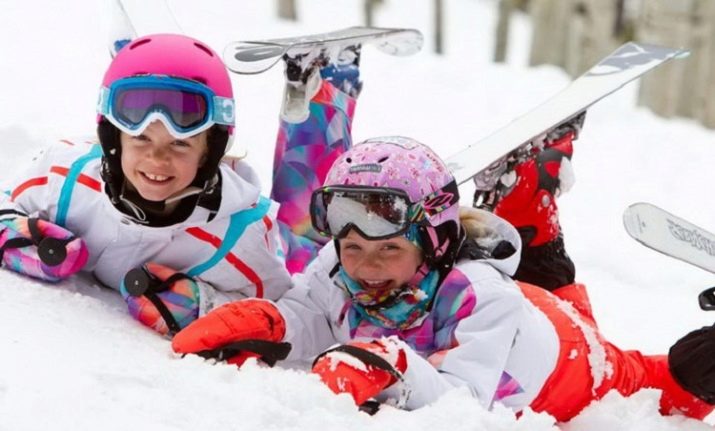Varieties of children's skis and their choice
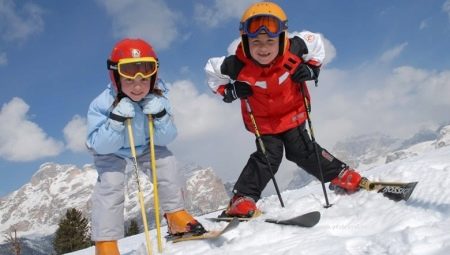
The Scandinavians joke that Norwegians are born with skis on their feet. And there is nothing to be surprised at, one has only to see how sports personnel are forged in Norway in those sports where one cannot do without such equipment.
And if with the birth of children on skis, of course, you cannot tell without a joke, then the fact that children are already on skis at the age of 3 is undeniable. However, you don't need to be Norwegian to teach children to play sports so early - you just need to choose good children's skis and start training.
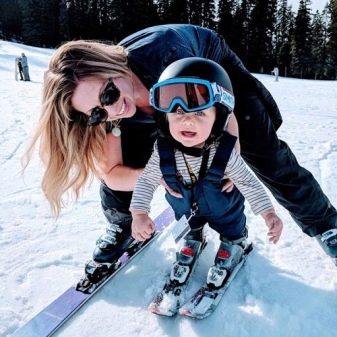
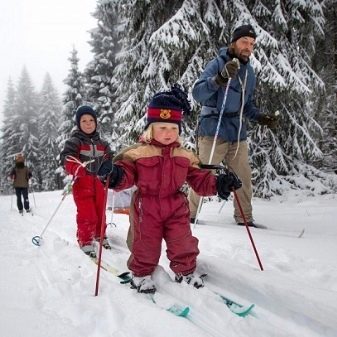
general description
Up to 4-5 years old, as a rule, they do not bother with the choice of skis - training at this time can only be playful. The main thing is that the baby learns to stand on them, does not fall (but to fall too, by the way, you need to learn, and early). At a very early age, inexpensive plastic skis are bought, and skiing does not involve poles. Often, parents do not understand why children in kindergarten ride without sticks, but this is normal, such kids will only get in the way of sticks. From about 5-6 years old, the choice of skis is already being built according to more serious criteria.
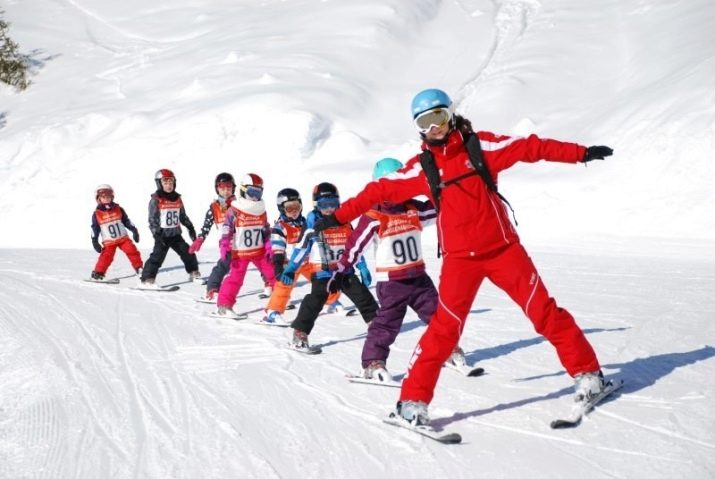
At this time, play lessons begin to replace real workouts, where children are taught the classic skiing course. The inventory is usually bought with notches or with a camus, it corresponds as much as possible to the age capabilities of babies. Until the age of 10, children will walk in a classical way, and after 10 - learn to skate. To understand which skis are right for your child, you don't need to rush to buy them.
At first, inventory can be rented. Having "tried on" one and the other pairs, evaluating them in practice, it will be clear which one is better to buy. In addition, at the rental point there may be specialists who will help in the selection.
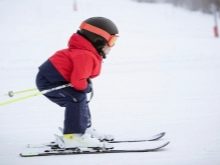
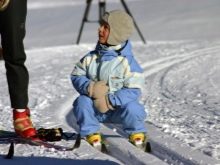
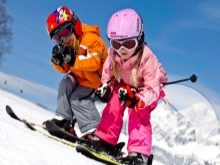
Species overview
And yet it would be strange to hope that an expert will understand everything, and that parents should not delve into the problem of choosing skis. A small educational program will not hurt. Skis are divided into two large groups - cross-country and mountain skis.
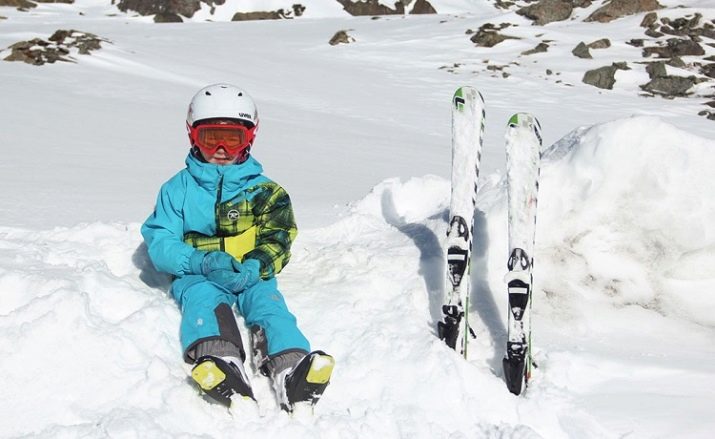
Cross-country skiing.
- Classic. These are long models with pointed noses. Their sliding surface is designed with anti-slip notches.
- Skating. These will be shorter, on their surface there are sharp sides that will prevent the skis from slipping.
- Station wagons. This is the name of the ski that is suitable for both types of skiing.
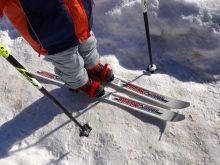

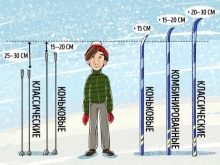
Alpine skiing can be:
- sports - usually they have increased rigidity, and they are suitable only for professional training;
- universal - and these are amateur samples;
- freeride for children - such pairs have a wide waist, allow you to ride off the pistes;
- Twin type is a type of ski that involves rear and front rockers, which means that you can go forward and backward (these skis are suitable for both trails and for mastering park elements).
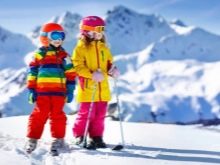
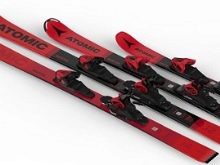
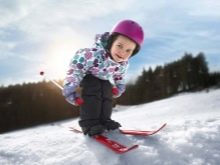
Most experts agree that you need to learn to ski while cross-country skiing. For example, it is more convenient to keep balance, glide confidently on running pairs. If you choose between classics and skating, the first ones wins.
On classic pairs (they are plastic or wooden) there are notches that will not allow you to develop high speed. For training, such a speed is rather a hindrance, so this quality of equipment only helps.
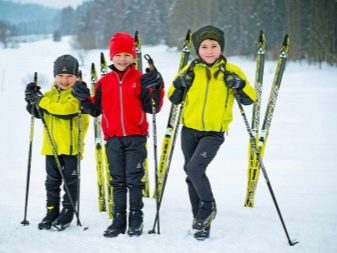
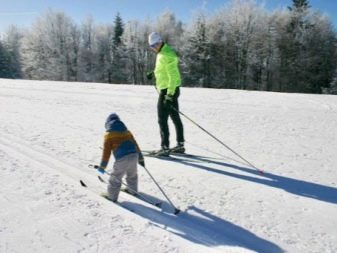
Material for children's skis.
- Wood. Such equipment allows you to ride in freezing temperatures, with dry snow. Wooden samples will not gain high speed, but for training this, as already noted, is rather an advantage. Wooden inventory will not roll back. If we mention its disadvantages, it is the constant treatment of steam with a special tool. In addition, if you store your wooden equipment incorrectly, it can dry out.
- Plastic. Such skis are much stronger than wooden ones. They make it possible to pick up speed higher. But there are also notches on them (nevertheless, high speeds are not useful for learning). Modern models of this type are mostly plastic.
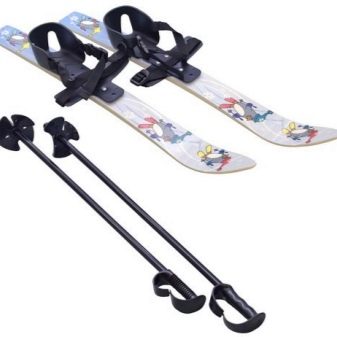
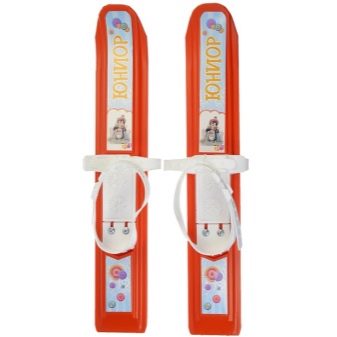
Ski boots must be selected separately. And they are needed only by those children who are going to seriously engage in this sport. For everyone else who skates from time to time, for pleasure, ordinary winter shoes (and a pair of warm socks) are enough. The skis may have straps or elastic bands to secure the shoes.
On more professional models, there are special sliding structures where only ski boots can be inserted.
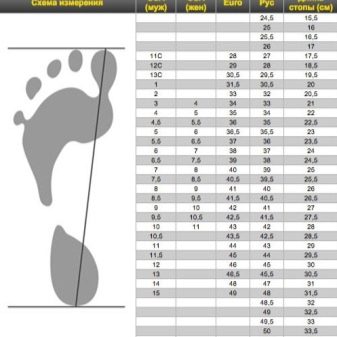
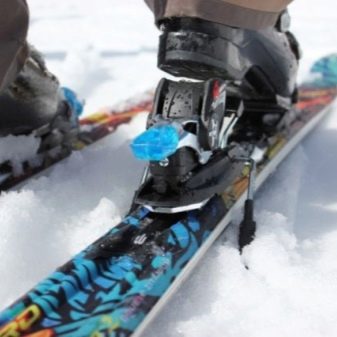
Top Models
Let's say we have decided on the type of skis and the material of manufacture. But there are different manufacturers competing with each other, try to figure it out.
Well, the following units will definitely appear in the rating of popular and high-quality models.
- Snowstar Pink Kids. In the children's line of the famous Fischer brand, there are models that are sold directly with mounts. They are very bright, fashionable in design, and have notches. The cost is over 6,000 rubles.
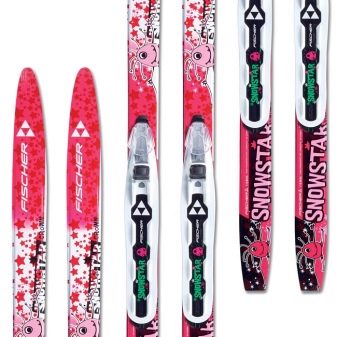
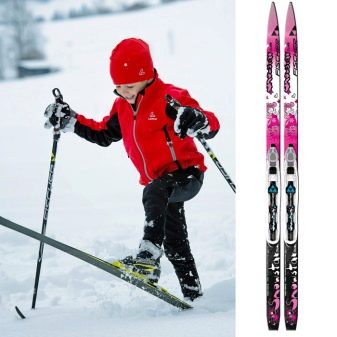
- Race Pro Classic Jr. And this is a representative of the children's line of the Norwegian brand Madshus. Skis are good for high-speed walking, they will be appreciated by guys who have already mastered the running technique. But the cost of the inventory is also high - from 10,000 rubles.
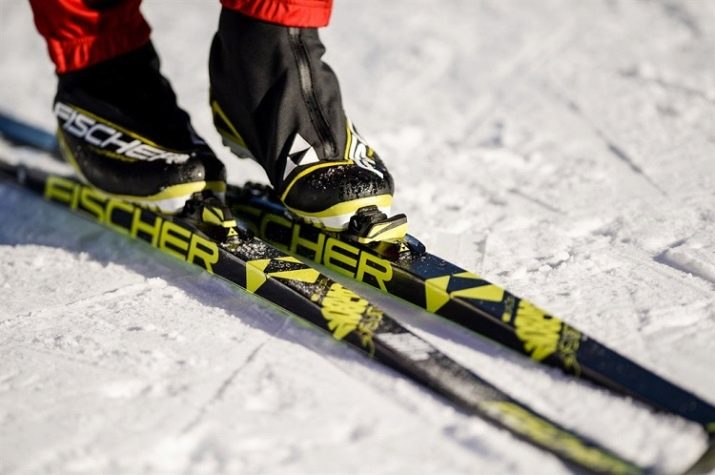
- Olympic Sport Olympic Penguin. A Russian seller (but skis are made in China) offers an inexpensive amateur model no more than 700 rubles. For an initial skiing style (with the transition to a classic one), this budget option is suitable. If this is just outdoor activities and not professional training, a couple would be a good buy.
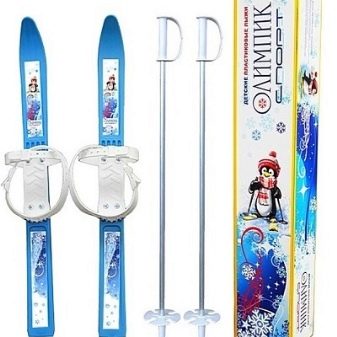
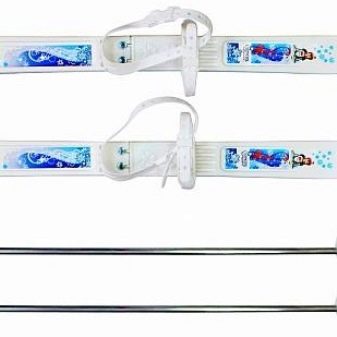
- Atomic Redster S5 Junior. Austrian skis of a completely different price segment, for a pair you will have to pay about 8,000 rubles. But they are not intended for beginners, but for already advanced users who have mastered the skating style. They are not suitable for beginners, if only because they are too slippery.
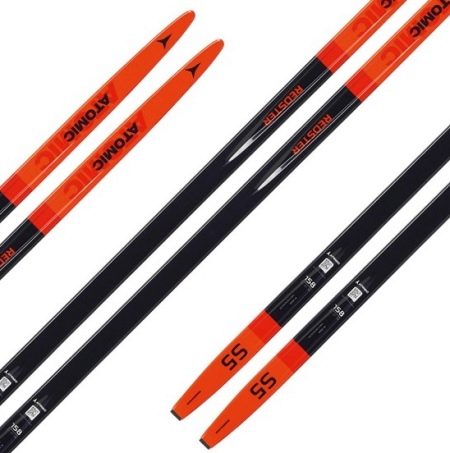
- STC Step. Purchase from the budget category. These cross-country skis are suitable for both classic skiing and skating.The kit includes fasteners, which attracts the buyer who is looking for the first equipment for the child. The construction is very reliable, suitable for beginners, but the plastic surface of the skis can be scratched.
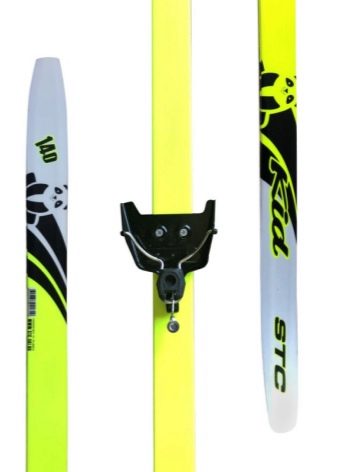

- Tisa Top Universal. The Ukrainian manufacturer offers good skis for amateur skiing. They are made of plastic, but they have a wooden core. Lightweight, yet stable. They cost about 3000 rubles. For beginners, as well as for those who try their hand at skating style, a good purchase.
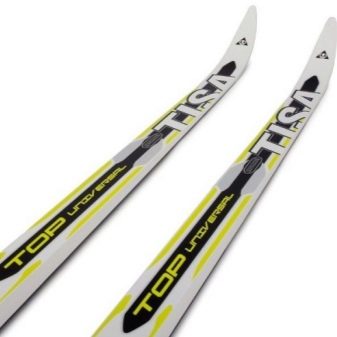
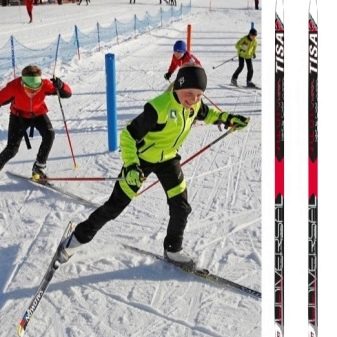
- Prestige, mini skis. These are wide models that are optimal for babies up to 5 years old, especially for those who still practice skiing as a game. The inventory is made of durable plastic, fabric straps are used as fasteners. The skis glide well, they will not fly off the shoes (which is especially important for kids skiing). The large selection of colors also attracts. And the price is only about 400 rubles.
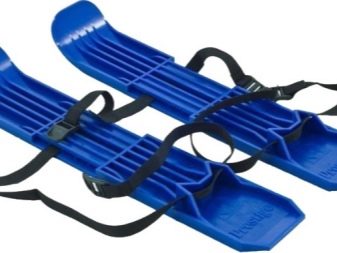
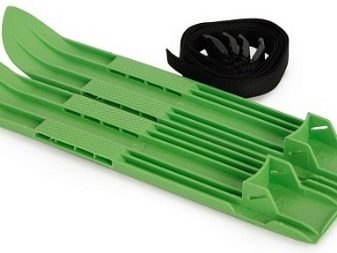
- Olympic Virage-sport. The Russian manufacturer offers plastic samples at a price not exceeding 1000 rubles. The nose part of the equipment is rounded, thanks to which it can be called safe, getting injured is practically excluded. For those who are just trying to ride, a good option. The skis have a plastic mount, there are thorns under the straps that will prevent the shoes from falling off.
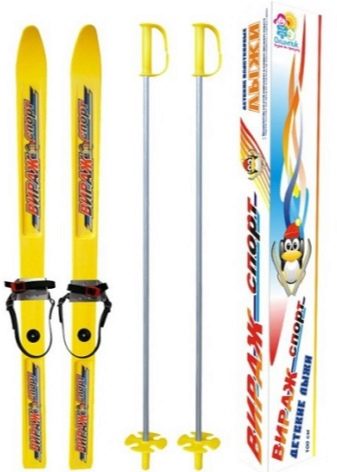
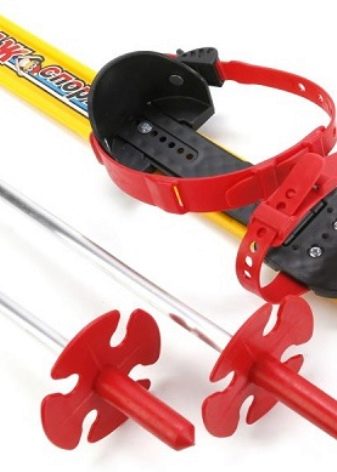
- Nordway XC Bliss. Often, for the first time, it is not preschoolers who start skiing, but adolescents. For schoolchildren, such a model will suit. They are intended for teaching the classical style. They are considered soft, excellent grip on snow. They slide without lubrication because they have notches on the surface. You can buy them complete with sticks. Plastic skis for recreational activities can be purchased for 2,200 rubles.
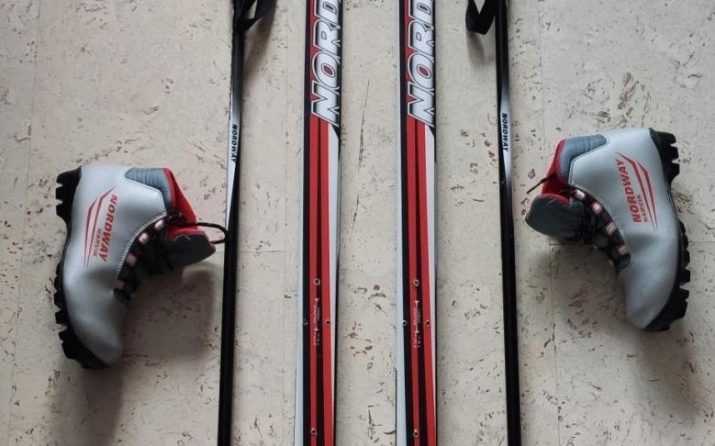
- Classic N75 INOVIK. The French brand presents a budget model of skis, which will cost the buyer about 1,700 rubles. Wood, plastic and fiberglass are used to make the inventory. Sturdy, attractive in appearance, lightweight, they are a good choice for beginners. True, they will have to be lubricated from time to time, and only certain boots can be used with skis.
However, you can deviate from the ratings, because less advertised manufacturers often offer a decent product, especially if it is sold in a store with a good reputation.

Optional accessories
First of all, these are ski poles and ski boots. If the parents pick up the sticks very high, the child will pull them along the ground, and in order to lift them from the surface, he will have to raise his hands high every time. All this, of course, is too uncomfortable for the child. But if you use short sticks, the child will lose reliable support. Yes, it will be easier to maneuver with them, but resisting is a problem.
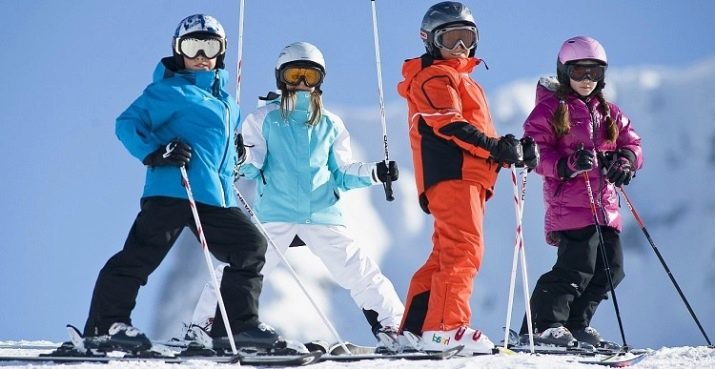
How to pick up sticks - algorithm:
- come to the outfit store with the child, give him the sticks that he liked for trying on;
- one stick must be turned upside down, given to the child in his hand - he takes it with his hand, under the ring;
- the child's elbow should be pressed to the body, and the fist with the stick ring should be released to the waist;
- sticks for the classic move should be 25-30 cm lower than the child, for the skating - 15-20 cm lower.
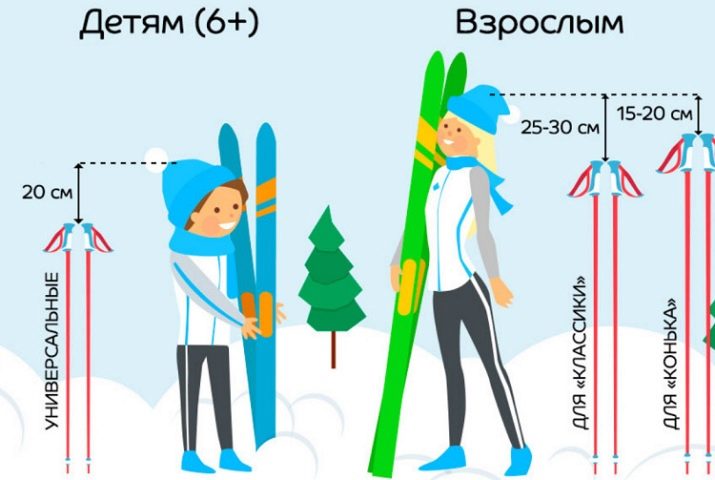
The issue with children's shoes is not so critical: at first they are not necessary at all. If the bindings on a pair are universal, then any comfortable winter shoes (including the worn sock) will do. But when the child grows up and his level of skiing becomes higher, you can buy ski boots (N-75 mounts). Professional attachment systems are marked SNS or NNN. We will have to take into account the fact that children grow up quickly, so a 2 cm margin in ski boots may be present.
With regard to fastening, their degree of rigidity should be moderate: it is good if it is a metal base and semi-rigid belts. The lock should be elastic, not tight, it is important that the child himself can take off and put on his shoes.
As for a ski suit, beginners do not need it: a winter jacket (shorter, light), sweatpants or insulated leggings will be enough.The set described in this paragraph is enough to start skiing.
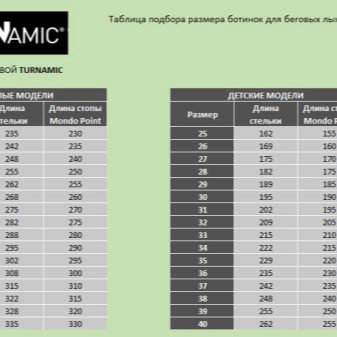
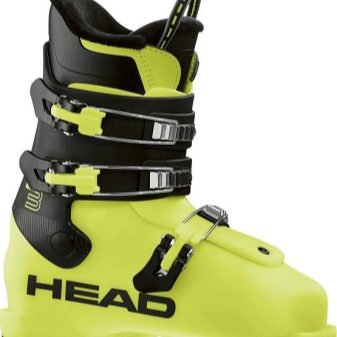
How to choose skis for a child?
When the whole theory is mastered, it is time to move on to practice and to taking into account individual data, which also affect the choice. This is the child's height, age and, finally, the level of his preparation.
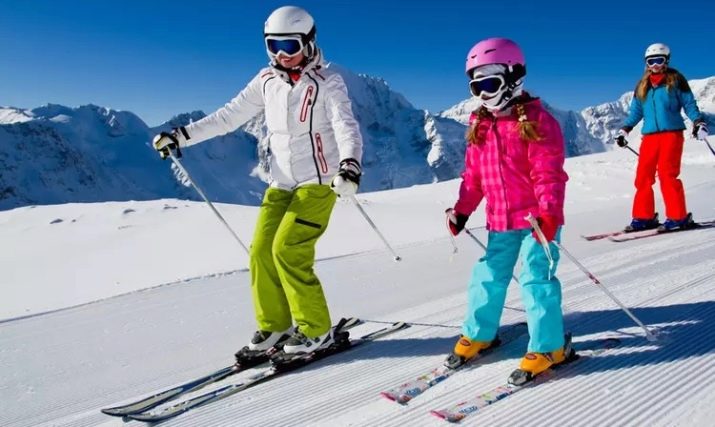
By height
Experts say that height selection is the most important selection criterion. Height and size of skis:
- classic skis for a child should be 20-30 cm higher than him (that is, for a child with a height of 120 cm - skis 140-150 cm, with a height of 100 cm - 120-130 cm, etc.);
- combined skis assume a length of 15-20 cm higher than height (height 110 cm - skis 130 cm, height 120 cm - skis 140 cm);
- skating skis must exceed the child's height by 15 cm;
- if the skis are picked up by a preschool child, then their length ranges from 50 to 90-100 cm (that is, skis can be 70, 75, and 80 cm);
- to make sure that the skis are not small, that they are sized correctly, you need to take a ski pair, put it vertically, and put the child next to him - he should reach the edge of the ski with his fingertips.
Usually there are no problems with this selection.
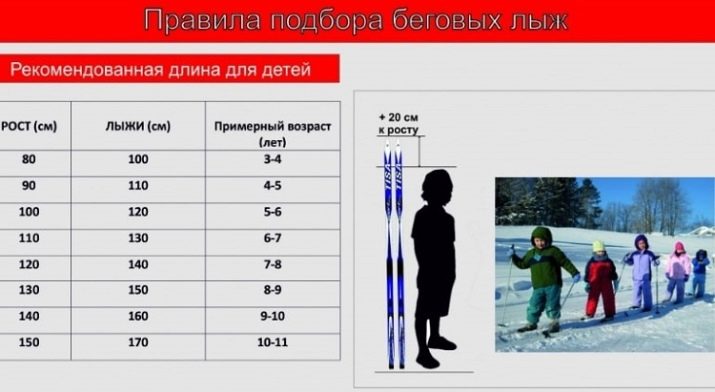
According to the age
Taking equipment for growth (and significantly for growth) is not the best tactic. The child simply will not be able to learn how to ride properly, because initially it will be uncomfortable for him. But the feeling of the coincidence of the size of the skis, their correspondence to the physiology of the child is the most important thing in learning. It is great if there is more than one skier in the family: then equipment with the same bindings will be required. Younger children will eventually be able to switch to older skis, and older children will be able to pick up the parental model.
Children 3-4 years old need skis that are slightly less than their height in length. From 5 years old, this criterion changes, the skis will only be higher. As for the fasteners, they should be in the inventory of guys who are already 10 years old.
From this age, children already use ski boots for skiing. This applies to both girls and boys.
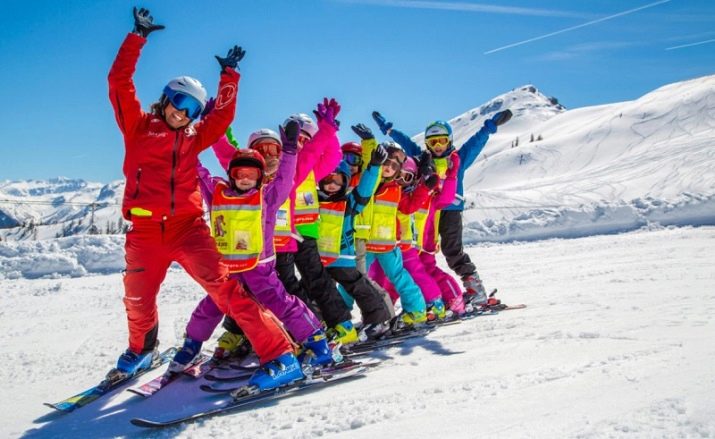
Once again about age selection.
- If a child under 3 years old is put on skis, short and wide skis are chosen for him, since it will be easier for the baby to keep balance on such skis. Usually this is an inventory 8 cm wide and 40 cm long, with a rounding of the nose and tail.
- Children at 4 years old and at 5 years old already stand more confidently on skis, but still this is still a short equipment (just below their height).
- For a first grader, skis are taken that are 15-20 cm taller than his height, the same principle holds true for all junior grades (up to about 9-10 years old). Children who went to school are already skiing like adults. Preschool models look very different.
- Juniors (these are guys 11-15 years old), as a rule, are familiar with the technique, know the riding styles. Therefore, teenage skis already actually correspond to ordinary adults. The emphasis is on the child's height, weight, skill, type of ride and style.
By the way, about the weight of the child. If it weighs more than 40 kg, skis are picked up by adults, if the weight is less than 20 kg, their length should be 0.7 m, weight 20 kg - 0.9 m, weight 20-40 kg - 1 m.
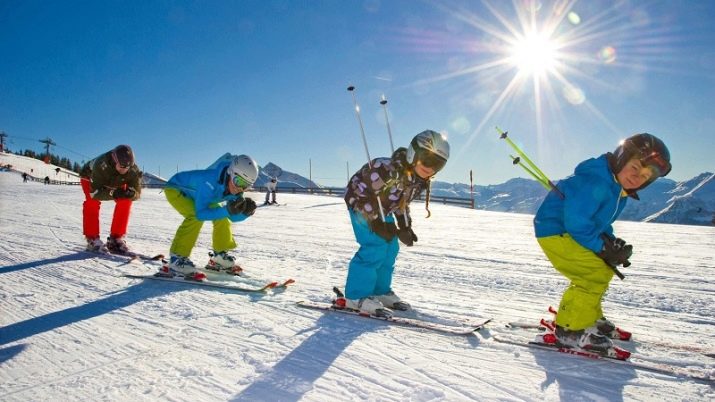
By the level of preparation
An objective assessment of the child's skills is another important criterion in order to correctly determine which skis to buy. The level of skiing is conventionally divided into beginner, intermediate and confident. Expert advice.
- Wooden skis glide less, which is very good for beginners. If they immediately stand on good plastic ones, they can be "carried away" - children are afraid of such a start, they can refuse to continue. In addition, children often fall at high speed, and trauma at the beginning of training is a definitely negative factor.
- Only when the skier feels confident is it time to switch to plastic models. - they are both stronger and lighter, but they slide much better, which is a plus for a confident young skier at this stage.
- It's easier to stand on a wide pair, that's why kids start with wide skis. It will not be possible to drive quickly on these, but for three-year-olds and four-year-olds such a goal is not worth it.
- You should always start with hobby equipment, even if the child has already grown up, and the parents want to give him the best.When the child gets used to it, when he gets used to skiing, decides to work on them more seriously, then you can think about a professional pair. You also need to remember that the inventory will have to be updated every 2-3 years. And if the child has growth spurts, and even more often.
- Classic notched skis will not achieve high speed, which is normal for beginners. They will not roll back and this will give the child confidence. Indeed, at the initial stage, it is more than important to prevent fear from developing, but this is not always successful. Often a child first starts skiing in a physical education lesson, and skis may be inappropriate, and the instruction for skiing is not individual, and as a result, the child is simply afraid of skiing.
- Skating skis have no notches. And if the child has the skills of the classic move, that is, he is well acquainted with the base in practice, you can take skating skis. If the child is already 7 years old, and you cannot call him a beginner, a skating pair is quite suitable for continuing education. The speed will be different, the child will be delighted. There is a sharp side along the edges of the ridge pair, it will not allow the equipment to slide sideways. It is worth paying attention to the length of the skis - skating skis are always shorter than the classic ones.
- Universal models are also worth considering, as they are a compromise and very good option. There are no notches on them, but they are wider than the ridge ones, that is, they are also suitable for learning to move.
- If we are talking about alpine skiing, they are shorter than all other options. They are lightweight and have a "fitted" shape. They cost more than cross-country ones, so if you buy them, then for constant riding. In other cases, renting skis is much more profitable.
But, it is worth repeating, you still have to start training with running models. You can, of course, not follow this rule, but such tactics are rarely justified. Still, self-confidence, understanding of the peculiarities of skiing begins with cross-country skiing - after them it is easier to make friends with mountain skis.
